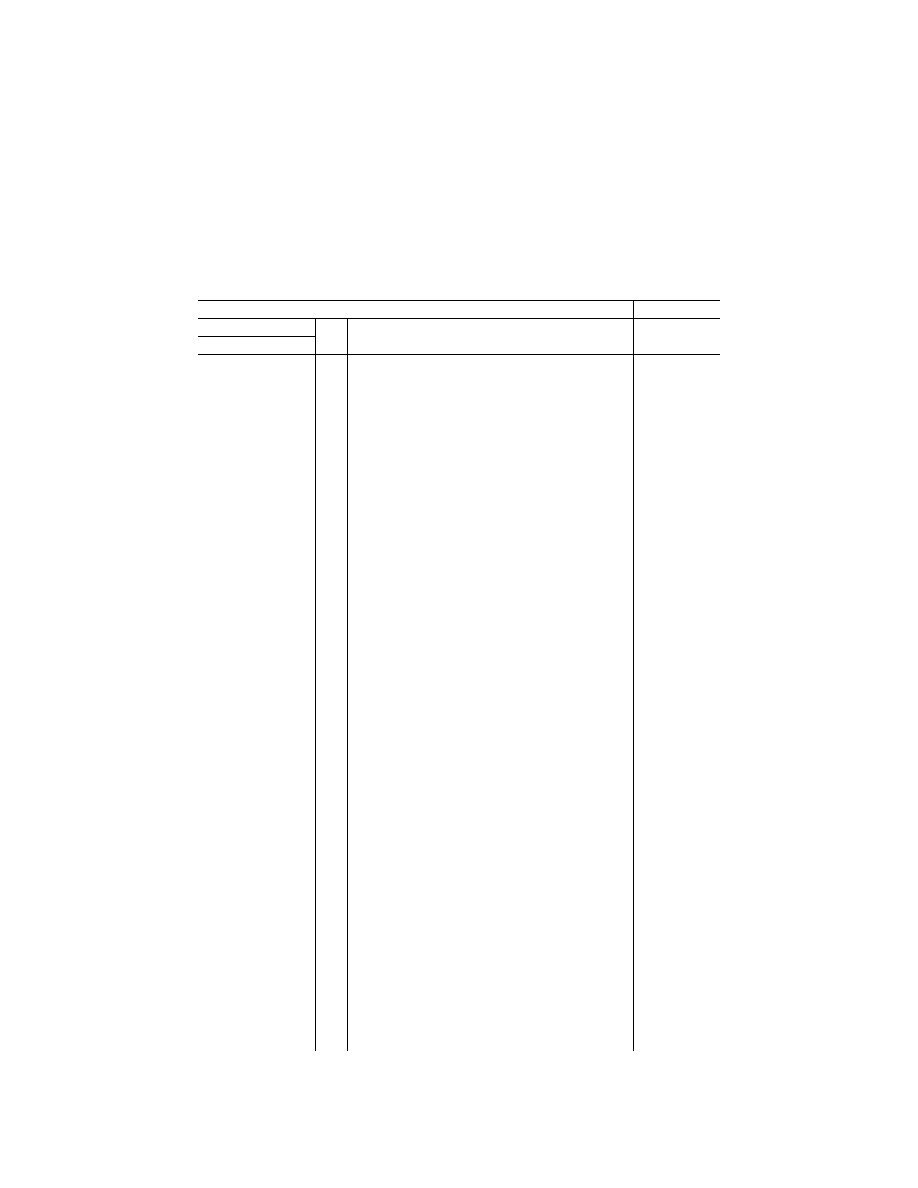
382
14 CFR Ch. I (1–1–19 Edition)
Pt. 60, App. C
T
ABLE
C2E—A
LTERNATIVE
D
ATA
S
OURCES
, P
ROCEDURES
,
AND
I
NSTRUMENTATION
—Continued
[The standards in this table are required if the data gathering methods described in paragraph 9 of Appendix C are not used]
QPS requirements
Information
Table of objective tests
Level
By
only
Alternative data sources, procedures, and instrumentation
Notes
Test entry number and title
1.h.2. Autorotation Perform-
ance and Trimmed Flight
Control Positions.
X
Data may be acquired by using a synchronized video of the cali-
brated helicopter instruments and the force/position measure-
ments of flight deck controls.
1.j.1. Performance. Run-
ning Landing All Engines.
X
Data may be acquired by using a synchronized video of the cali-
brated helicopter instruments and the force/position measure-
ments of flight deck controls.
1.j.2. Performance. Run-
ning Landing One Engine
Inoperative.
X
Data may be acquired by using a synchronized video of the cali-
brated helicopter instruments and the force/position measure-
ments of flight deck controls.
1.j.3. Performance. Balked
Landing.
X
Data may be acquired by using a synchronized video of the cali-
brated helicopter instruments and the force/position measure-
ments of flight deck controls. The synchronized video must record
the time of the ‘‘balk landing’’ decision.
2.a.1. Handling Qualities.
Static Control Checks.
Cyclic Controller Position
vs. Force.
X
Control positions can be obtained using continuous control position
recordings. Force data may be acquired by using a hand held
force gauge so that the forces can be cross-plotted against con-
trol position in each of the control axes.
2.a.2. Handling Qualities.
Static Control Checks.
Collective/Pedals vs.
Force.
X
Control positions can be obtained using continuous control position
recordings. Force data may be acquired by using a hand held
force gauge so that the forces can be cross-plotted against con-
trol position in each of the control axes.
2.a.3. Handling Qualities.
Brake Pedal Force vs.
Position.
X
Brake pedal positions can be obtained using continuous position re-
cordings. Force data may be acquired by using a hand held force
gauge so that the forces can be cross-plotted against brake pedal
position.
2.a.4. Handling Qualities.
Trim System Rate (all
applicable systems).
X
Control positions can be obtained using continuous control position
recordings plotted against time to provide rate in each applicable
system.
2.a.6. Handling Qualities.
Control System Freeplay.
X
Data may be acquired by direct measurement.
2.c.1. Longitudinal Handling
Qualities. Control Re-
sponse.
X
Data may be acquired by using an inertial measurement system, a
synchronized video of the calibrated helicopter instruments and
the force/position measurements of flight deck controls.
2.c.2. Longitudinal Handling
Qualities. Static Stability.
X
Data may be acquired by using an inertial measurement system, a
synchronized video of the calibrated helicopter instruments and
the force/position measurements of flight deck controls.
2.c.3.a. Longitudinal Han-
dling Qualities. Dynamic
Stability, Long Term Re-
sponse.
X
Data may be acquired by using an inertial measurement system, a
synchronized video of the calibrated helicopter instruments and
the force/position measurements of flight deck controls.
2.c.3.b. Longitudinal Han-
dling Qualities. Dynamic
Stability, Short Term Re-
sponse.
X
Data may be acquired by using an inertial measurement system, a
synchronized video of the calibrated helicopter instruments and
the force/position measurements of flight deck controls.
2.c.4. Longitudinal Handling
Qualities. Maneuvering
stability.
X
Data may be acquired by using an inertial measurement system, a
synchronized video of the calibrated helicopter instruments and
the force/position measurements of flight deck controls.
2.d.1.a. Lateral Handling
Qualities. Control Re-
sponse.
X
Data may be acquired by using an inertial measurement system, a
synchronized video of the calibrated helicopter instruments and
the force/position measurements of flight deck controls.
2.d.1.b Directional Handling
Qualities. Control Re-
sponse..
X
Data may be acquired by using an inertial measurement system
and a synchronized video of calibrated helicopter instruments and
force/position measurements of flight deck directional controls.
2.d.2. Handling Qualities.
Directional Static Stability.
X
Data may be acquired by using an inertial measurement system
and a synchronized video of calibrated helicopter instruments and
force/position measurements of flight deck directional controls.
2.d.3.a. Handling Qualities.
Dynamic Lateral and Di-
rectional Stability Lateral-
Directional Oscillations.
X
Data may be acquired by using an inertial measurement system
and a synchronized video of the calibrated helicopter instruments,
the force/position measurements of flight deck controls, and a
stop watch.
2.d.3.b. Handling Qualities.
Dynamic Lateral and Di-
rectional Stability Spiral
Stability.
X
Data may be acquired by using an inertial measurement system
and a synchronized video of the calibrated helicopter instruments,
the force/position measurements of flight deck controls, and a
stop watch.
VerDate Sep<11>2014
16:30 Jun 25, 2019
Jkt 247047
PO 00000
Frm 00392
Fmt 8010
Sfmt 8002
Q:\14\14V2.TXT
PC31
kpayne on VMOFRWIN702 with $$_JOB